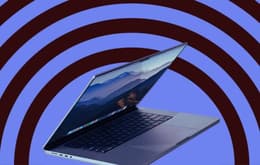
Your drawer of old tech is a problem
Updated on December 18, 2024
December 18, 2024
4 mins read
Christine Ochefu
Journalist
Journalists and experts took to the Climate Week NYC stage for our first Right to Repair event, to discuss the importance of circularity and repair within tech.
For the last 15 years, the Climate Week NYC summit has been a driving force, bringing together international leaders within business and the government to discuss policy, legislation, and the climate crisis.
At Back Market, we aim to make tech last longer – and repair is an essential way to achieve that. In fact, our mission statement is to empower humanity to save machines through circularity and repair, so we felt a duty to share our message first with the other environmentalists who care the most.
We paired up with 2 organizations, iFixit – the global e-commerce site known for their easy-to-follow repair guides and one5c – the publishing platform dedicated to climate action, sustainability and solutions – to host our first-ever Right to Repair event at the Javits Centre in Manhattan.
As rookies, little did we know the space would be noisy, crowded and difficult to access, with a badge line so long that none of our presenters got to eat lunch.
From panel discussions on repairable tech to soldering demonstrations from the team at Back Market, take a look at our highlight reel from the day.
Fix your phone; fix the planet
Unsurprisingly, the activists stole the show. iFixit CEO Kyle Wiens, New York State Assemblymember Pat Fahy, Executive Director of repair.org Gay Gordon Byrne, and one5c publisher, Joe Brown joined us to discuss Right to Repair legislation and the legal landscape.
Kyle Wiens, CEO, iFixit on a simple way to help the planet (and make some extra cash)...
“The best thing you can do is to sell your old phone ASAP, and get money.”
“Of the 50 elements from the periodic table that go into making a smartphone, only 13 are recycled. That’s why we have problems like a thorium tailing pond near Las Vegas becoming a ‘dystopian lake fueled by the world’s technolust’.”
“Is a two-year-old chip really not strong enough to run AI? Give me a break!”
Gay Gordon-Byrne, Executive Director, repair.org on the dangers of e-waste…
“It’s not just a problem of filling up our landfills, it's also what e-waste means in those landfills, and then to the water basins and more below that. The chemicals, the batteries and more – e-waste is the fastest growing waste stream in the world.”
Pat Fahy, New York State Assemblymember on fixing rather than recycling…
“[It’s] 250 pounds of raw material dug out of the ground to make [a phone]. You multiply by how many phones we have, we're manufacturing over a billion smartphones a year. We're terrible at recycling them, and even trying to start recycling, we can get very, very little raw material back. So, I'm interested in fixing all things. That’s why I passed the country's very first Right to Repair law in the state of New York.”
The big, clean business of repairable technology
Senior Reviews Editor at WIRED Julian Chokkattu, Back Market CEO Thibaud Hug de Larauze, Google’s Manager of Government and Public Affairs Nicole Azores, and one5c’s Editor-in-Chief Corinne Iozzio, discussed the economic and environmental opportunities within repairable technology.
Julian Chokkattu, Senior Reviews Editor at WIRED on the repair of small devices…
“Littler things like smartwatches and wireless earphones… there's currently no real solution to repairing one of these products. You might be able to fix the screen but a lot of the times you're just getting a replacement unit. That means that the older version that broke can't be repaired, and just goes to landfill.”
Thibaud Hug De Larauze, CEO of Back Market on the circular economy…
Thibaud shared his own experience downloading an iFixit repair guide and attempting to repair his headphones. After a full day’s work, he succeeded and realized that very few people would be willing to go that far...
“Everything is being made and designed to make people upgrade and buy new. This is what we're fighting [against] at Back Market, in order to make the circular economy grow as fast as possible. We’ve built a platform for people to purchase refurbished devices instead of new first, because the ecosystem of 1,800 refurbishers, that use the platform to actually sell the devices, have found a way to do a good job and deliver great quality. Plus we’re thrilled to have let the victorious fight to ensure that by 2025 all manufacturers will be forced to make spare parts for 7 years.”
You can do it! Repair demonstrations from iFixit
To round off the day, experts from iFixit and Back Market’s innovation lab lead, Luis De Los Santos, conducted live demos. From soldering techniques to repairing your own phone, visitors were encouraged to learn techniques to prolong the lifespan of their devices.

What is the Right to Repair?























